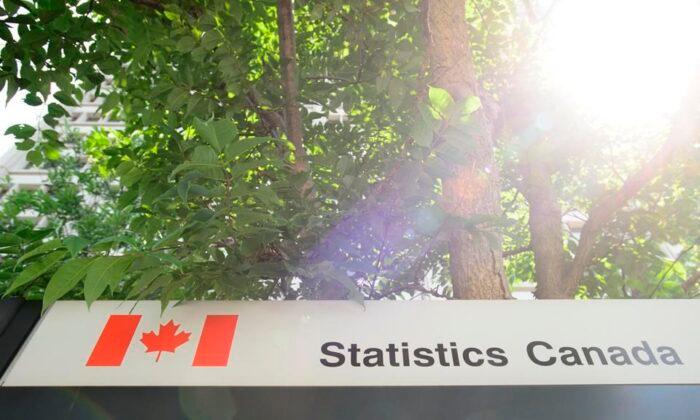OTTAWA—Statistics Canada says the economy in the first quarter had its worst showing since 2009 as steps taken to slow the spread of COVID-19 forced businesses across the country to close their doors and lay off workers.
The agency said Friday gross domestic product fell at an annualized rate of 8.2 percent in the first three months of 2020.
The collapse came as gross domestic product for March fell 7.2 percent as restrictions by public health officials began rolling out during the month, including school closures, border shutdowns, and travel restrictions.
Events earlier in the quarter also had a drag on gross domestic product (GDP) with Statistics Canada pointing to the Ontario teachers’ strike and rail blockades in February, as well as a drop in oil prices.
Household spending, a backbone of the Canadian economy, was down 2.3 percent in the first quarter of 2020, the steepest quarterly drop ever recorded.
The drop in household spending was broad, affecting goods and services.
Statistics Canada said new car purchases were down 8.8 percent, trucks and vans by 9.4 percent, and used cars by 10.1 percent owing to “income uncertainty,” more people working from home and the closure of dealerships in some provinces, including Ontario and Quebec.
Housing spending on clothing and footwear dropped as well by 16.4 percent, as did spending on food, beverage and accommodation services—by 10.9 percent—and air transport—by 15.7 percent—as bars and restaurants were ordered closed and travel restrictions kicked in.
Instead, spending on going out became money spent staying in, Statistics Canada said.
Spending on food and non-alcoholic beverages increased by 7.2 percent in the first quarter, while there was a 6 percent rise in spending on alcoholic beverages.
As a result of less spending overall, the savings rate rose for the quarter to 6.1 percent from the 3.6 percent recorded in the fourth quarter of 2019 with higher rates recorded at higher income levels.
The savings some households have built up during the shutdown period could translate into extra spending as restrictions are eased and businesses reopen, says CIBC senior economist Royce Mendes.
“Overall, the economy has likely troughed at least for now, with businesses beginning to reopen,” he wrote in a note. “Look for the economic data to begin showing signs of revival over the summer months, even if it only represents the low-hanging fruit of eased restrictions.”
The average economist estimate had been for a 9 percent drop in GDP for March, while the average estimate for the first quarter as a whole is for a GDP pullback at an annualized pace of 10 percent, according to financial markets data firm Refinitiv.
The national statistics office said preliminary information indicates an 11 percent drop in GDP for April, but that figure is likely to be revised as more information becomes available.
“Nonetheless, the March and April decreases are likely to be the largest consecutive monthly declines on record,” the agency said in an online post this morning.
Similarly, the agency said first-quarter figures are likely to have larger than usual revisions in subsequent data releases as some numbers had to be estimated because they were not available on time.






Friends Read Free